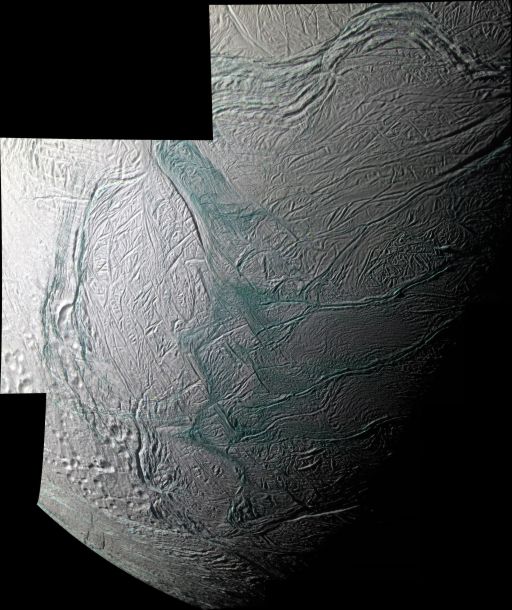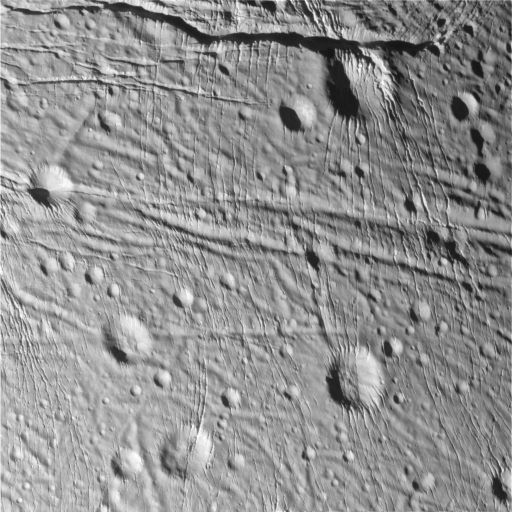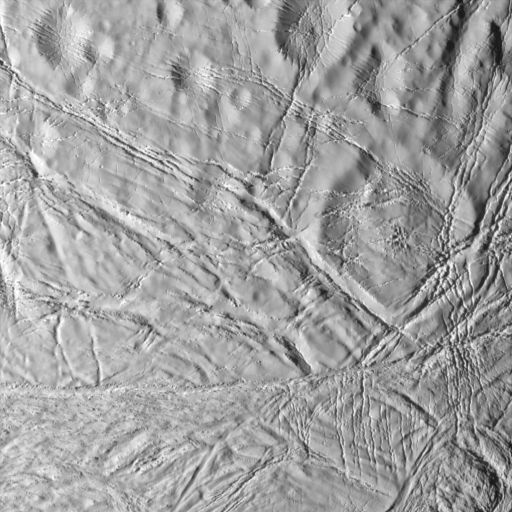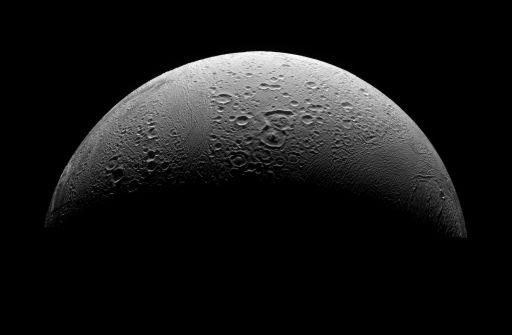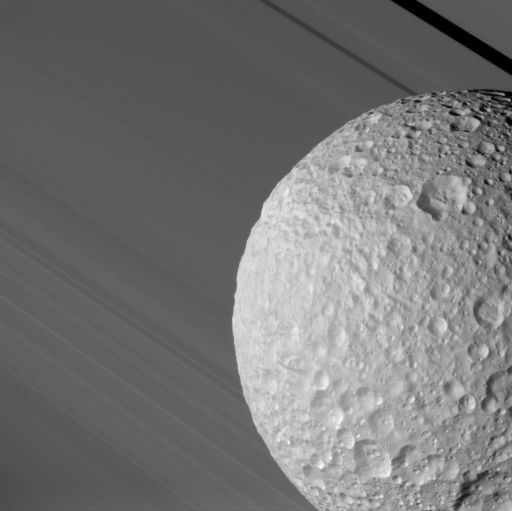Elizabeth "Zibi" Turtle • Jul 17, 2009
The rest of Enceladus
by Zibi Turtle
That Saturn's little moon Enceladus has active plumes venting material from its south pole is incredibly exciting. Perhaps even more intriguing, however, is that the activity is so localized and that Enceladus' surface exhibits such a wide range of geologic terrains, potentially reflecting heterogeneity in its interior.
The youth of the South Polar Terrain is demonstrated not only by the current activity observed there but also the lack of impact craters.
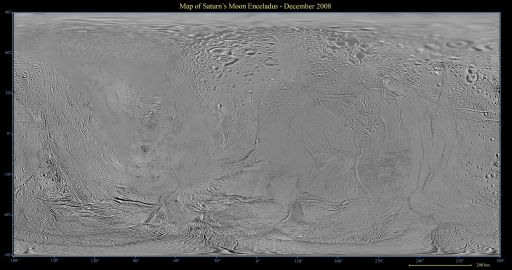
Map of Enceladus - December 2008
ap of Enceladus. The currently active south-polar region has few if any craters and cratering is sparse over some longitude ranges (~60°W to ~120°W, and ~240°W to ~330°W). However, the terrain at high northern latitudes and longitudes ~30°W and ~180°W have much higher crater densities.
These observations give us important clues about Enceladus and its interior. That the geologic activity varies so significantly across the surface, from currently active areas to others likely eons old, suggests that the heat reaching the surface from the interior also varies from place to place. However, even the oldest areas, appear to have undergone some subtle modification, demonstrating that they, too, are not without some heat from the interior. In order to understand Enceladus, it's essential to consider the moon in its entirety.
Support our core enterprises
Your support powers our mission to explore worlds, find life, and defend Earth. You make all the difference when you make a gift. Give today!
Donate

 Explore Worlds
Explore Worlds Find Life
Find Life Defend Earth
Defend Earth


